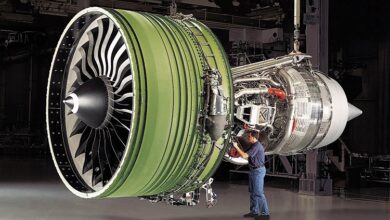What Is Edge Computing and Their Prime Trends?
Edge computing enables devices’ front lines to immediately analyze and act upon data. It also opens the way for a new generation of real-time insights, machine-managed operations, and smart decision-making that touches areas in the health, manufacturing, retail, and transportation industries.
But the edge is far from static. It’s shifting and moving. It is shaped by innovative, cutting-edge future trends. Let’s deep dive into seven top trends that can improve edge computing.
What is Edge Computing?
Edge computing is more about processing and analyzing data at or near its point of origin, like IoT devices, sensors, or Local Area Networks (LAN), instead of transmitting it over long distances to distant data centers for analysis.
The main reason behind edge computing is a reduction in latency, which further improves the efficacy of applications and services when real-time processing of data occurs. Edge computing reduces the response time as data is processed closer to the network edge.
Top 7 Trends in Edge Computing
1. Augmentation of Edge AI
Integrating AI at the edge directly with devices has high promise to transform simple data collectors into self-decision-making intelligent bodies. Smart sensors in factories have the potential to tune parameters automatically in real-time based on the analytics derived from the collected data.
The development and deployment of such intelligent applications are easier and faster than ever today. Edge-optimized AI frameworks like TensorFlow Lite and OpenVINO release access to AI at the edge into even the smallest firms without high technical expertise.
2. 5G and Edge Computing Synergism
With 5G networks that have download speeds of up to 20 Gbps and latency of less than one millisecond, edge is the new game-changer for an edge player. With this integration, real-time processing and transmission of data are allowed, rendering possible applications that were previously impossible due to latency.
Think of self-driving cars having conversations with each other as well as the environment at large in today’s date or remote surgeons performing complex procedures with almost no delay. These are just two of the infinite ways through which 5G and edge computing can change various industries.
Strategically positioned edge data centers play a crucial role in ensuring optimal performance with very minimum latency in the 5G network. These miniaturized data centers process and analyze data locally offloading the workload of core cloud infrastructure, facilitating quicker times for responses.
3. The Emergence of Edge Containers
Deployment of edge applications increasingly uses containerization technologies such as Docker, bringing advantages with it like portability, isolation, resource efficiency, and others. The structure of containerized applications as self-contained units simplifies deployments and management across different edge devices with limited resources.
Originally intended for cloud orchestration, Kubernetes is being leveraged into shapes that involve frameworks, such as MicroK8s, to operate with edge deployments. It makes the management of containerized workloads scalable and edge-friendly.
4. EaaS:
Equally to the IaaS model in cloud computing, EaaS is a provision service platform which provides access to processing power, storage, and networking resources located at the edge. This eradicates the upfront investment barrier in infrastructure, which allows even the smallest organizations such as resource-constrained start-ups or SMEs to adopt edge computing.
Leading cloud providers are entering this market like AWS, Azure, and Google Cloud Platform offer different kinds of services that will satisfy specific needs. On top of this, however, we have specialized companies focused on edge computing whose solutions are aimed at solving problems specific to each industry.
5. Increased Security and Privacy
It has huge security implications for the shift towards data processing at the edge. Sensitive data collected and analyzed on the edge must be protected against cyber-attacks and unauthorized access. To secure both data and devices at the edge, there should be secure booting and encryption based on hardware; together with strong authentication protocols.
These lead to more privacy-sensitive approaches such as federated learning and homomorphic encryption, allowing for data analysis with less exposure of personal details. With federated learning, one can train machine learning models collaboratively over decentralized datasets while keeping individual data on edge devices. Homomorphic encryption allows computation on encrypted data so that the integrity of the privacy is maintained, even at the point of data analysis.
6. IT/OT Convergence
These lines are becoming obscure nowadays with the advent of Industry 4.0, or IIoT because business operations are managed by IT systems, whereas OT systems deal with both industrial operations and physical assets themselves.
This allows us to understand how Edge Computing bridges this gap, enabling both systems to integrate. As a consequence, it allows a real-time analysis of information generated by OT that, through data, leads to the decision-making process, optimizing operational efficiency and improving performance overall.
Standardized interfaces and protocols, such as OPC UA, form the basis for successful convergence; it will ensure interoperability among those IT devices/systems that usually are vendor-specific and OT devices/systems by different vendors.
7. Fog Computing Integration
Fog computing is a layer of distributed computing, which lies between the edges and the cloud, filling out the complexity of deployments with geographically dispersed devices or high data volumes. Fog nodes aggregate and preprocess edge data before sending it to the cloud, optimizing bandwidth usage and reducing latency associated with critical applications.
Imagine that various sensors are observing climate conditions in a wide agricultural farm. The edge device can collect the data, and then the fog node will aggregate and partially preprocess it to detect anomalies or follow trends before forwarding the better-preprocessed data into the cloud for additional processing.
Conclusion
By all means, innovations like AI-powered edge devices, lightning-fast 5G speeds, and containerized deployments promise the dawn of real-time insights and autonomous operations. But the true strength of edge computing lies in much more than technical prowess-things like transforming healthcare with instant diagnostics, optimizing cities with adaptive traffic flows, and ensuring responsible development through collaboration and ethical considerations. Tomorrow’s edge isn’t a destination’s journey of shaping a better future one intelligent decision at a time.



